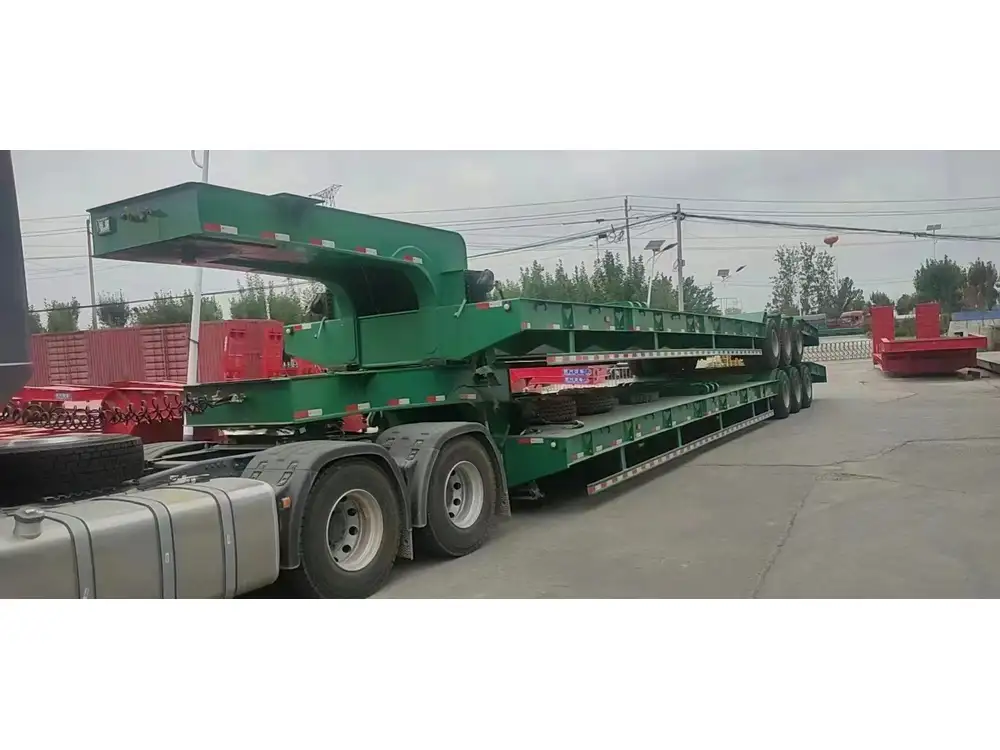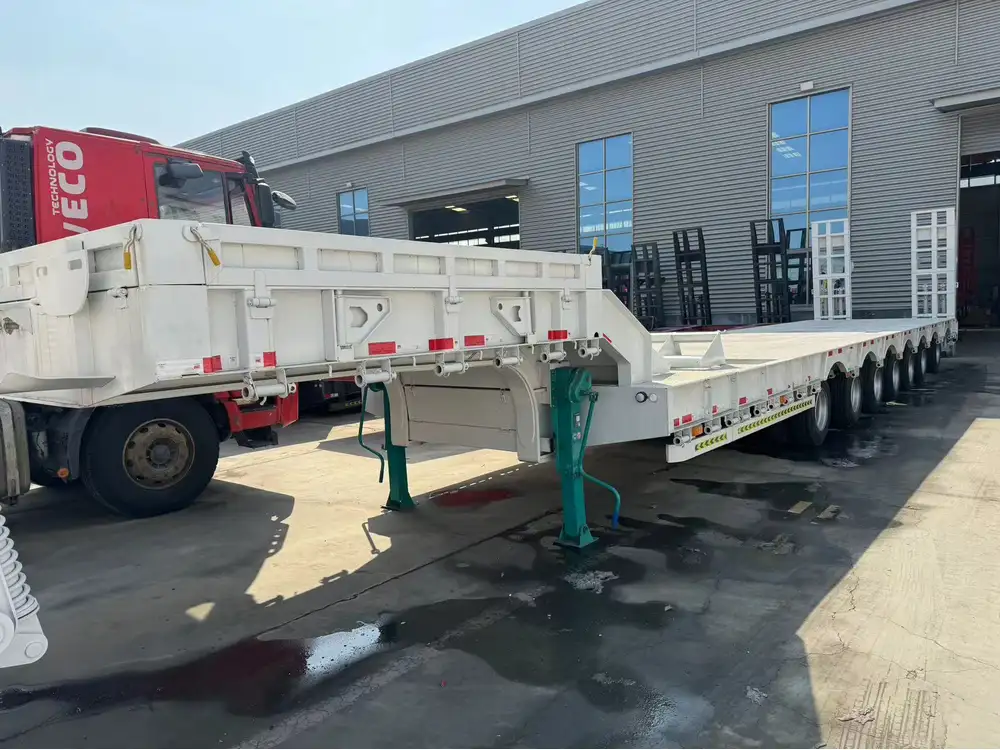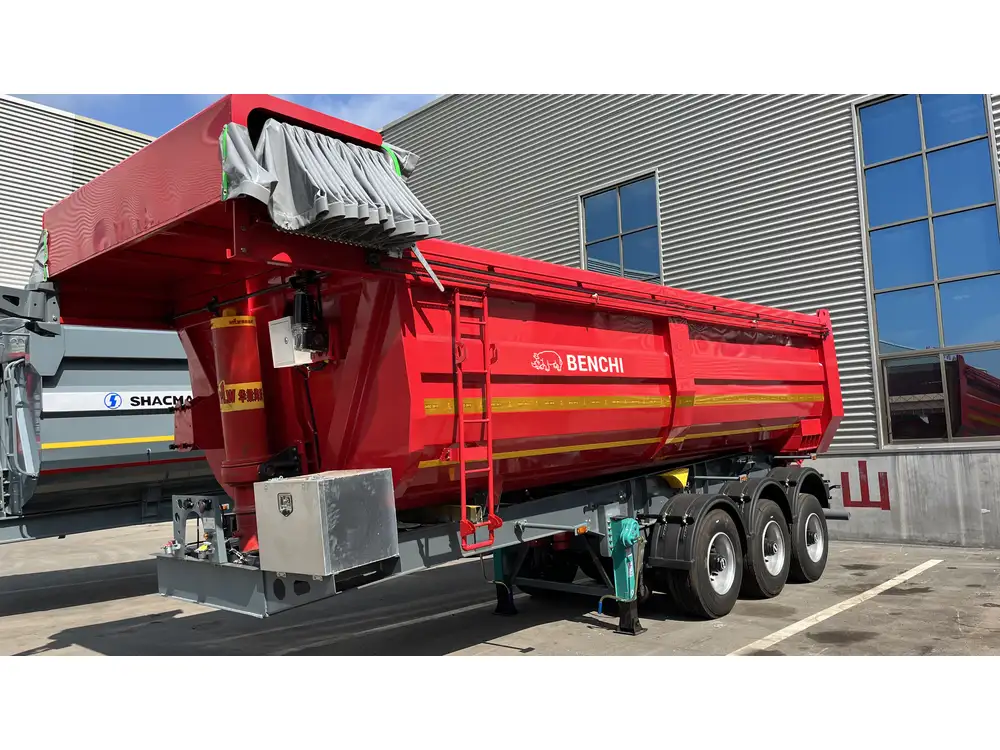Introduction to Flatbed Trailers
When it comes to hauling goods, a flatbed trailer serves as one of the most versatile choices available. Designed for heavy-duty use, these trailers come in various sizes and configurations. Among them, the 20 ft flatbed trailer is a popular option for both commercial and individual users. Understanding its weight is crucial not only for safety but also for legal compliance and operational efficiency.
In this guide, we delve into the weight specifications of a 20 ft flatbed trailer, the various factors affecting its weight, and practical considerations for users.
Key Weight Specifications

Average Weight of a 20 ft Flatbed Trailer
The average weight of a 20 ft flatbed trailer typically ranges between 4,000 to 5,000 pounds (1,800 to 2,300 kg). This weight can vary based on several factors including:
Material Composition: Steel, aluminum, and wood are the primary materials used for construction. Steel trailers tend to be heavier, while aluminum options are lighter but may have lower weight capacities.
Design Features: Trailers with additional features such as ramps, side extensions, or specialized bracing systems will weigh more than their basic counterparts.
Load Capacity Options: A trailer designed for heavier loads often incorporates more robust materials, increasing the overall weight.
Weight Capacity and Payload
Aside from the trailer’s intrinsic weight, understanding its payload capacity is essential. A 20 ft flatbed trailer typically has a payload capacity of 10,000 to 14,000 pounds (4,500 to 6,350 kg). This figure is the maximum weight the trailer can legally tow, including both the trailer’s weight and the weight of the cargo.
| Specification | Measurement |
|---|---|
| Empty Weight | 4,000 – 5,000 lbs (1,800 – 2,300 kg) |
| Payload Capacity | 10,000 – 14,000 lbs (4,500 – 6,350 kg) |
| Overall Gross Weight | 14,000 – 19,000 lbs (6,350 – 8,600 kg) |
Factors Influencing Trailer Weight

1. Material Type
The choice of material dictates not only the trailer’s weight but also its durability and maintenance requirements.
Steel Trailers: Offer strength and longevity but at a higher weight. Perfect for heavy-duty hauling.
Aluminum Trailers: Lighter and resistant to rust, making them ideal for those who prioritize fuel efficiency and ease of handling but may sacrifice some load-bearing capacity.
2. Accessories and Customizations
Additional features such as tie-down points, ramps, toolboxes, and integrated lighting can add significant weight. Assess the necessity of these features against their impact on your trailer’s overall weight.
3. Wheel Configuration
The number and size of wheels affect the weight distribution and overall weight of the trailer. A tandem axle setup provides more stability and may handle heavier loads, but it also increases the trailer’s weight.

4. Regulatory Compliance
In many jurisdictions, trailers must adhere to specific weight limits outlined by law. Knowing your trailer’s full weight—including load—is essential to avoid penalties during transport.
Common Uses of a 20 ft Flatbed Trailer
A 20 ft flatbed trailer provides remarkable adaptability across various industries. Here are some common applications:
- Construction: Hauling building materials, from lumber to concrete forms.
- Agriculture: Transporting farm equipment and harvested crops.
- Landscaping: Carrying heavy machinery, soil, and other landscaping materials.
- Furniture and Appliances: Efficiently moving oversized and bulky items.
Benefits of Flatbed Trailers
Easy Loading and Unloading: The open design allows for straightforward access, facilitating faster loading and unloading processes.
Versatility: Accommodates a range of cargo types, including items that can’t fit within an enclosed trailer.
Cost-Effective: Economical for businesses requiring frequent transport of heavy loads due to their high payload capacities.

Safety Considerations
1. Loading Practices
Proper load distribution is critical. Too much weight at the back or front can lead to instability, increasing the risk of accidents.
| Load Distribution Strategy | Description |
|---|---|
| Center Load | Keeps weight evenly distributed |
| Balanced Tow | Maintain equal weight on both sides |
| Avoid Overhang | Prevents shifting during transport |
2. Towing Capacity
Ensure that your towing vehicle can handle the combined weight of the trailer and cargo. Always refer to the manufacturer’s recommendations regarding towing limits.

3. Regular Maintenance
Regular inspections of the trailer’s tires, brakes, and overall structure are vital to maintaining safety standards.
Legal Compliance in Transporting with a 20 ft Flatbed Trailer
1. Weight Restrictions
Each state may have specific weight restrictions for both the trailer and the combined gross vehicle weight (GVW). Exceeding these limits can result in fines or detaining your load.

2. License Requirements
Towing a trailer often requires a specific license, particularly if the total weight exceeds local limits. It is essential to verify local laws before hitting the road.
3. Insurance Considerations
Check if your existing vehicle insurance covers trailer towing. If not, consider additional coverage as needed, especially for commercial applications.
Maintenance Tips for Your 20 ft Flatbed Trailer
Taking care of your flatbed trailer can extend its lifespan and maintain its performance. Here are some tips:

Regular Inspections
- Visual Checks: Regularly inspect for rust, cracks, or other signs of wear and tear.
- Tires: Monitor tire pressure and tread to ensure safe towing conditions.
Cleaning
- Surface Care: Wash the trailer post-use, especially if it has carried corrosive materials.
- Undercoating: Consider applying an undercoating to protect against rust, particularly if exposed to harsh weather conditions.
Lubrication
- Moving Parts: Regularly lubricate hinges, axles, and other moving parts to maintain performance.

Conclusion
A 20 ft flatbed trailer stands out as a remarkable tool for diverse transportation needs. Understanding its weight, load capacity, and the factors influencing these elements is vital for users looking to maximize efficiency and ensure safety. As we have explored, knowledge of regulations, safety practices, and maintenance routines is equally imperative for optimal performance.
For those considering the purchase of a flatbed trailer, or seeking expert advice on usage and maintenance, understanding the intricacies discussed in this guide will set the foundation for informed decisions.
By leveraging this comprehensive understanding, users can effectively meet industry demands, safely transport valuable cargo, and navigate the complexities associated with flatbed trailers. Your journey toward efficient hauling and safe practices begins now.



